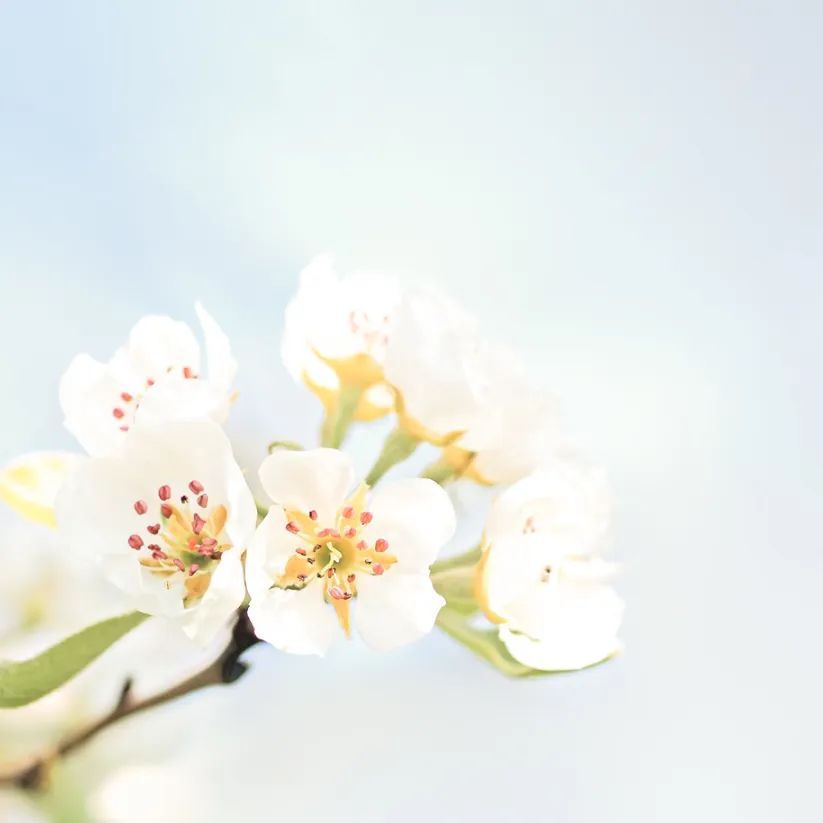Content source: China Traditional Chinese Medicine News
Author: Li Xiang, Song Yan, Hunan Academy of Traditional Chinese Medicine
Spring

In March, spring flowers are blooming, which is a good time for outing and enjoying the scenery. However, people with allergies often have uncomfortable symptoms such as itchy eyes, watery eyes, repeated sneezing, and runny nose. This is actually mostly due to hay fever.
What is hay fever
Hay fever is caused by patients allergic to plant pollen, mainly involving the eyes, upper respiratory tract, and skin. In spring, the pollen of trees such as poplar, willow, and sycamore is dominated, and a small number of patients may be caused by fungi, dust mites, or other inhalants or foods with obvious seasonality. The types of allergens are complex, and many people are repeatedly exposed to allergens without knowing it.
The clinical manifestations of hay fever include symptoms and signs in different parts of the eyes, upper respiratory tract, and skin: hay fever allergic rhinitis can be manifested as nasal itching, sneezing, runny nose, blocked nose, and poor breathing; hay fever allergic asthma Mostly manifested as paroxysmal cough, dyspnea, white foamy mucus, sudden asthma attack and gradually aggravated, no different from normal after remission; pollen allergic conjunctivitis may manifest as itchy eyes, swelling of eyelids, and other symptoms. Often accompanied by watery or purulent mucus secretions; allergic dermatitis may manifest as systemic or local erythema, papules, fine scales, itching or burning sensation.
The understanding of Chinese medicine on hay fever
Professor Qin Yuhui, a famous traditional Chinese medicine practitioner in Hunan Province, chief physician and doctoral supervisor of the Affiliated Hospital of Hunan Institute of Traditional Chinese Medicine, introduced that there is no hay fever disease name in traditional Chinese medicine. Diarrhea, eczema, addiction rash and other categories.
01 Causes of the disease
Hay fever is essentially an immediate allergic reaction. Chinese medicine believes that hay fever is based on deficiency and excess, the lung, spleen, and kidney are deficient in qi, and the body surface is not solid. Once the pathogens of wind-cold or wind-heat are exogenous, the external causes will lead to internal problems, resulting in the loss of lung, spleen, and spleen. If the phlegm and phlegm are stagnant, the pathological products accumulate, or occur in the eyes, or in the nose, or in the skin, or in the respiratory system, causing a variety of allergic diseases. As an allergen, pollen can be regarded as the inducement for the occurrence of diseases after the human body feels external pathogens. Therefore, hay fever can be attributed to the category of exogenous pathogens, and the treatment is based on syndrome differentiation of exogenous diseases.
02Traditional Chinese Medicine
Qin Yuhui introduced that the treatment principle of hay fever is to cure the symptoms in an emergency, and cure the root in a delay. In the acute attack period, expelling wind and dispelling pathogens, supplemented by strengthening the body; Specific treatments vary from disease to disease.
When allergic reactions occur, in addition to taking decoction orally, some traditional Chinese medicine methods can also be used for treatment, such as acupoint injection, acupoint catgut embedding, acupuncture, ear acupuncture, umbilical therapy, ear tip bloodletting, etc.
Auricular bloodletting therapy is suitable for those with acute allergies and internal toxic heat to relieve heat and detoxify. The specific method is to pierce the ear tip with a three-edged needle after routine disinfection at the ear tip (both sides), and squeeze out 2 to 3 drops of blood.
Umbilical therapy refers to the preparation of medicines into ointments, pills, pills, and powders, then applying, absorbing, smoking, moxibustion, steaming, and ironing on the navel (called Shenque acupoint in traditional Chinese medicine), and then fixing it with gauze or tape. Uncover after 2 hours. Chinese medicine believes that medicine in the umbilicus can act on the whole body through the connection of the five zang-organs and six fu-organs, twelve meridians, and eight extraordinary meridians, so it has a wide range of effects.
The fumigation and washing method is to fumigate with decoctions such as wormwood leaves, Kochia kohlrabi, and Qianliguang, or use drug vapor to fumigate the nose, nose, and eyes, which has better results.
Daily considerations
Qin Yuhui reminds that people with allergies are easily troubled by pollen when they go out and travel. They should take corresponding measures in time to prevent the occurrence of allergies. They can start from the following aspects.
01Avoid contact with pollen
A mask should be worn during the pollen dispersal season, and if necessary, a windscreen and a nasal filter should be worn, and a pollen blocker should be used.
Reduce outdoor activities, especially noon and afternoon outings. The best time to go out for a walk is after the rain, when the air is fresh and pollen is the least affected.
In windy weather, it is best to close the doors and windows to prevent pollen from entering the room when the window is opened. Air purifiers or fresh air equipment with the function of filtering pollen can be installed indoors.
Promptly change and wash clothes worn during outdoor activities and dry clothes in a clothes dryer instead of drying clothes outside.
02 Principles of daily diet
Strengthen nutrition, eat more light, vitamin-rich foods, and try to eat less high-protein, high-calorie, spicy and stimulating foods.
Prophylaxis
1 to 2 weeks before the pollen season, you can take preventive medication under the guidance of your doctor, which can prevent the onset of hay fever or reduce the discomfort. If you have pollen allergy symptoms such as itchy skin, cough, and difficulty breathing, you should go to the hospital for treatment in time.